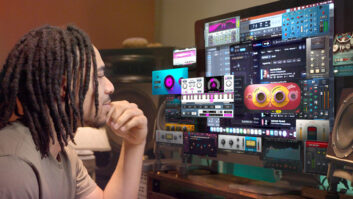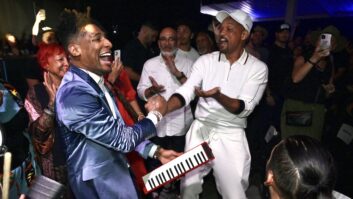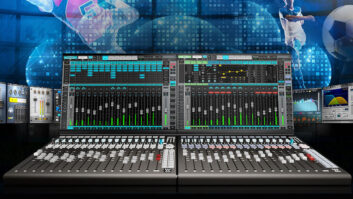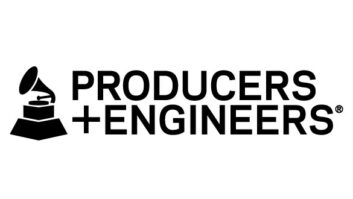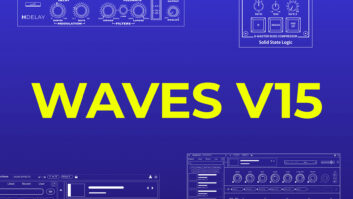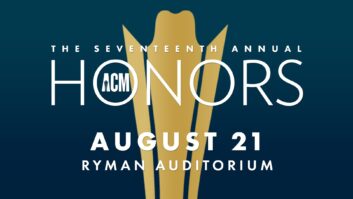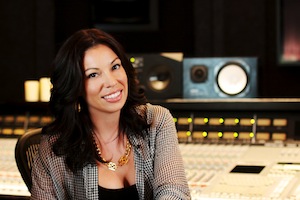
Even as women continue to make great strides in areas from politics to corporate boardrooms, they are still rare in the recording business outside of studio manager and clerical positions. When Miami mixer/engineer/composer Marcella Araica attended the Full Sail Production and Recording Program in her home state around the turn of the millennium, “I had a class of around 165 or 170, and only five of us were women,” she says. “That was my first taste of seeing women being such a minority in the field. Out in the world, women are thought of us being teachers and nurses and doing blue-collar work, which I found eye-opening. After I graduated and started getting into my career, I’d talk to younger girls about what I did, they all said, ‘I didn’t know I could do that,’ and it’s because women are not educated to know what they can do. I think a lot of women are still taught to go to school and eventually become mothers, have our children and that’s the end of the story. But I think there’s an opportunity for women to do all the things that they put their minds to, do them as well as men do, and also achieve what we were put on this earth to do, which is to bear and raise children.”
She should know. Not only has Araica (pronounced “ah-rye-ka”) established herself in the 12 years she’s been out of Full Sail as a top engineer, mixer and composer—with a glittering client list that includes Timbaland, Missy Elliott, Britney Spears, Madonna, Pink, Duran Duran, Usher, Justin Timberlake and Nelly Furtado, among others—a few months ago she also became a mother for the first time. When I ask her about whether she was able to take a real maternity leave, she laughs. “I had my son [Kayden] in Naples, Italy, so the first month I was still in Italy, but then as soon as I got back to the States, I had to finish building my new studio in Miami, and at the same exact time, my artist, Luke James, who I signed to my label, NARS Records, his album had to be turned in because it releases [in September]. So I didn’t get the time off that I really wanted, but it’s working out.”
When Araica started at Full Sail, she wasn’t sure what path her career might take. “I loved what [producer] Linda Perry was doing,” she says, “and I think I was trying to follow her a little—the songwriting aspect and the musicianship—but I ended up going headfirst into the engineering end of it.” It turns out she was a very fast learner, and her rapid advancement in the field did not sit well with some of her peers.
“I got a hard time from some people who didn’t like that I moved up so quickly,” she reflects. “I remember when I started my internship [at Hit Factory Criteria in Miami], I got my first assisting gig two months after I started, and there were other interns there who had been there nine months and never worked a session. So I got a lot of heat, a lot of hatred. There was another assistant, too, who just did not like the fact that I was a woman doing it, and he’d come at me like, ‘Are you sure you can pick that amp up? It’s so heavy. ’ I got tired of that.
“But I definitely had the drive. I’ll be honest—you go to Full Sail and you learn what you learn, which is a lot, but then it’s a different thing when you get put out there in the lion’s den. It’s like, okay, now there’s no time or place to say, ‘No,’ there’s no time or place to say, ‘I can’t do this.’ You do it, you know? That’s what I excelled in. Even if I wasn’t comfortable doing something, I tried my hardest and I still made it believable. And if I blow up the room…” She laughs again. “I learned from all those experiences. I learned from patching things in the wrong way and feedback blaring through the speakers, loud pops, whatever. I looked stupid at times at my sessions, but you learn quickly—‘I’ll never do that again.’”
She counts Jimmy Douglass and Demacio “Demo” Castellon as early mentors in the field, and she lucked out that two of her first high-profile clients—Timbaland and Missy Elliott—also had knowledge to share and the patience to let her develop her chops on the job. Up to a point: “Missy used to call me a turtle in the beginning, because I was so slow at Pro Tools,” she says with a chuckle. “She’d just kick me out of the chair: ‘You too slow!’ The only way I could become proficient enough was not in front of her, so at the same time I was working for her, I was taking little neighborhood sessions when I could fit them, just for the experience. That’s partly where I learned to be fast, and learned quick keys and learned how to EQ on the spot, without having to think about it, without being embarrassed about it. I had to grow my confidence like that.” And it ended up being Missy Elliott who gave Marcella the nickname she carries to this day—“Ms. Lago,” after the speedy Lamborghini Murcielago sports car—because of her fleet-fingered Pro Tools work.
It helped, too, that she was smart, friendly and easy to work with. “The studio manager who hired me [at Hit Factory] originally and is still a dear friend, Trevor Fletcher, always said, ‘Fifty percent of this job is technical and the other 50 percent is your personality.’ The social game of it is a big part. And at the end of the day, it’s not my gig. If I’m working for them, I have to do whatever it takes. You don’t want to come off as a know-it-all: ‘This is the way I do it, so I’m gonna do I this way.’ You have to be open.”
It was through Timbaland that Araica hooked up professionally with producer Nate “Danja” Hills. The two have worked on many projects together through the years and have also been studio partners for some time, including their brand-new facility in Hallandale (North Miami). “It’s a three-room complex with a dedicated mix room, Danja’s producer room and a small writing/vocal room,” she says. “We have two SSL 9000s—the one in the mix room is a 72-channel SSL 9J, the producer’s room has a 40-channel 9J and the other room has an SSL Matrix. So it’s a super-cool high-end facility, perfect for what we’re doing.” She does most of her mixing on good ol’ Yamaha NS-10s (“I’ve been doing that since Day One”), though her mix room also has Augspurger TAD 1603s for mains.
In an age when so many artists and engineers have eschewed big consoles and analog outboard gear in favor of working exclusively in the box with plug-ins, Araica is happy working on the equipment she came up on and spending the time she feels she needs to get everything right. It’s an old-school approach she fears is fading: “A lot of the newer artists don’t understand that kind of work ethic and that’s frustrating to me, because even though I’ve only been doing this for 12 years, I actually got into it at a time when I got to see that work ethic. Now everything is so fast, fast, fast, ‘Let’s just get it done!’ It doesn’t feel like there’s as much appreciation of the art that’s behind it. Like, I see mixers who take pride in doing two or three mixes in a night, and that’s fine—you can do that. But they look at me and I’m still using 80 channels of the SSL and they’re wondering, ‘Why do you do that? Everything is in the box now.’ Well, that’s not how I work. I don’t care if people call me a dinosaur. I like the analog sound. I like passing everything through the board. I like EQing everything individually. I like that it takes me six to eight hours to do a song.”
Which isn’t to say she abhors plug-ins. “No, no, not at all,” she says. “I do love those UA plug-ins. And plug-ins in general have come a long way. If it sounds good, I want to use it; I’m not opposed to it. But I still prefer the sound of raw analog gear. I like the noises some of the machines make. ‘Oh, my god, we’ve got a little buzz!’ Yeah, just leave it! It adds character. Not if it’s obnoxious, of course, but if there’s a little low hum, it might just be what the unit is bringing to the record. It is what it is, and sometimes it adds to the overall sound.”
Though her work has taken her far and wide—including to London, where she worked with Madonna and Duran Duran—Araica still loves living and working in Miami, where she was born and raised. In addition to its enormous Latin music focus, the city has long had an extremely vibrant hip-hop/R&B scene, which Araica has been plugged into from the moment she got out of school.
“The recording community here is pretty small, nothing too crazy,” she says. “It’s definitely not like L.A. today, or New York the way it was before all the studios closed down. But Miami is a tight-knit community. It’s almost like a small town. If you work in the music business down here, you probably know almost everybody. If you need a writer or a musician, there’s a matrix out here and people help each other. I sometimes wish it was bigger—though not too big. But people love Miami, so they’re always going to come here.”
And there is plenty of work coming her way. In fact, it’s a wonder she can juggle the myriad commitments she has between mixing, composing, engineering, her record company (NARS) and being a mom. How does she do it? “I like to pretend that there are 30 hours in a day; that’s for one. I also have the help of an assistant; the rest is all in my head and my Blackberry. I create project lists and have charts up in my office and my studio and I always try to keep a mental note of remembering what’s happening. I’ve been working at this pace and doing it so long now, I’ve figured out a natural way of going about it all. So far it’s been working.”
Any last words of wisdom? “My philosophy is you dream with your life and you love every minute of it. So if you see something you want to do, just go for it.”
